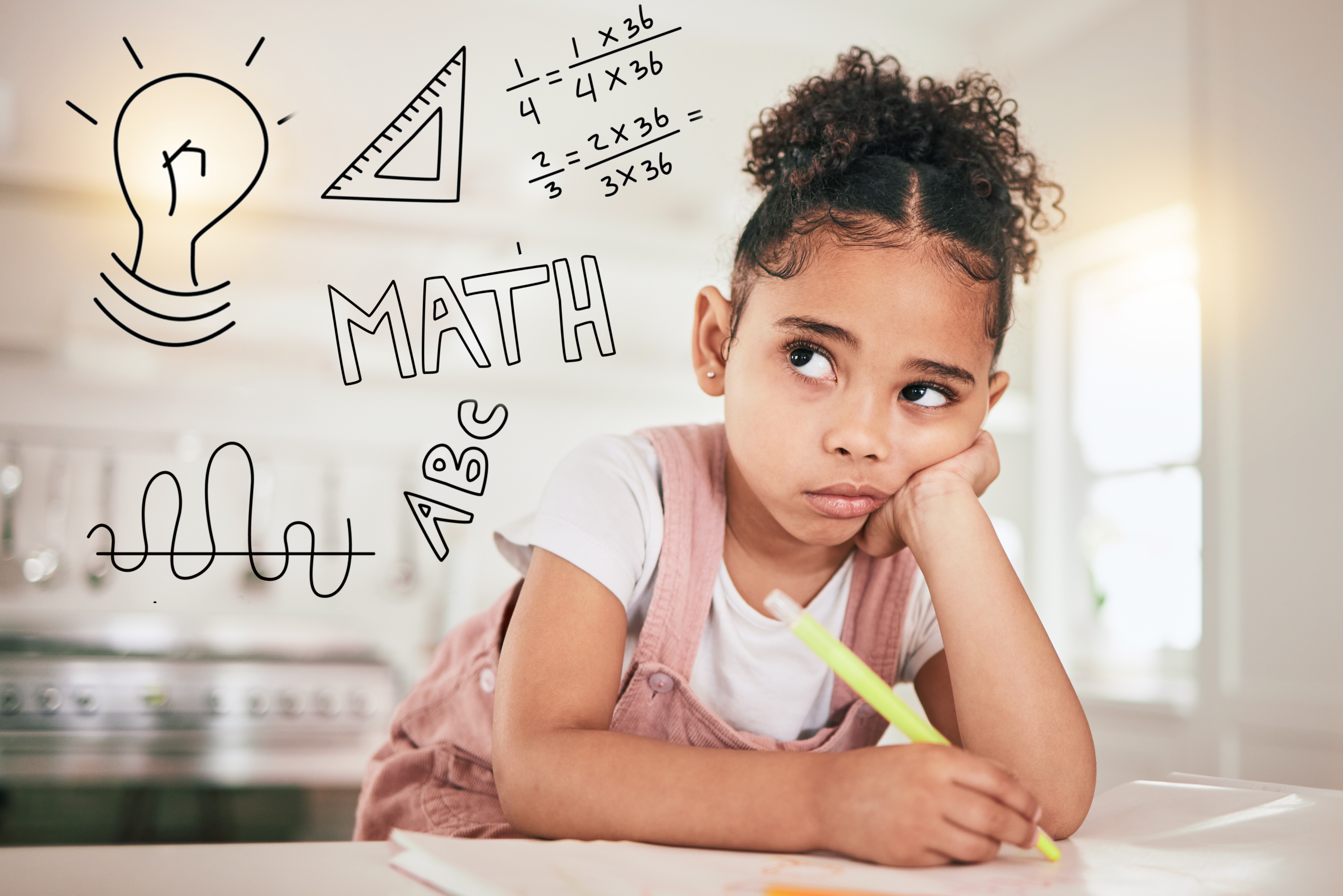Math Experts recommend a Multi-Sensory approach to Math Instruction
 Did you struggle with Math when you were in school? You are not alone! Children in America score poorly on national measures of Math achievement and the problem is getting worse.
Did you struggle with Math when you were in school? You are not alone! Children in America score poorly on national measures of Math achievement and the problem is getting worse.
According to the Hechinger Report, a non-profit e-newsletter, this may be due to more than just being behind due to the impact of COVID or from a societal lack of concern. There is actually a learning disability that impacts the brains’ ability to process numbers and calculations. Everyone is familiar with dyslexia. Schools usually screen and catch children with reading problems and provide remediation. According to this article, which is part of a series of reporting on education specifically studying “The Math Problem”, this may be actually be caused by dyscalculia.
Similar to dyslexia, it is a neurodevelopmental learning disorder where parts of the brain are not able to understand and manipulate mathematical concepts. Unfortunately, there may be as many as 7% of the population that suffers from this disorder. And although many states have required schools to screen for dyslexia, no such mandate exists to screen for math-based disabilities early in a student’s school career.
This article presents advice from several national math disability experts. Teachers report that preservice training did not supply them with the knowledge and skills to address dyscalculia. The guidance from experts includes teaching math using manipulatives and a multi-sensory approach like that found in Orton-Gillingham for reading. “In particular, students with dyscalculia often need a more structured approach to learning math that, like reading, involves “systematic and explicit” instruction and provides ample time to practice counting and recognizing numbers, said Lynn Fuchs, a research professor in special education and human development at Vanderbilt University.”
There are a number of Kinems games that use a multi-sensory approach to practicing mathematical computations and committing math facts to memory. These games are an alternative to the drudgery usually associated with learning operations and number concepts. Students eagerly to spend time using their math skills to “win” capitalizing on the motivational qualities of gaming.
Mathloons
One of the most basic and important foundational skills in mathematics is the ability to perform mental calculations. The “Mathloons” game helps students to practice addition, subtraction, multiplication, division with whole numbers and fractions up to 100, in a fun and engaging way. The equations appear as numbers in balloon equations. Teachers can choose the number facts they want their students to learn. Pop goes the answer!
Quarry Bam
This game for teaching math operations and properties helps the student to choose the correct answer to an equation that will spark an explosion indicating the correct response. The teacher can choose the set of questions to practice math operations/properties.
Runi-Roon
Runi-Roon is a fun runner game that helps a student understand visual and/or oral instructions and improve motor coordination. Using their body in the movement station or their mouse/stylus on a 1-1 device, the student controls an avatar character of a raccoon that runs along a path in order to collect the correct appearing objects. By making side walking movements, the student helps the running raccoon collect the right objects and avoid obstacles or objects that look quite similar. When collecting the wrong objects, or hitting on obstacles, the child loses “stamina” and could even run out of lives. There are math facts the teacher can choose to increase fluency for addition and subtraction within 10.
Sea Formuli
Here, the student must discover the missing factor or operator in an equation relating three numbers. In the motion station, they move the jellyfish with the correct number or operator into the empty basket thus filling-in the equation. This game promotes algebraic thinking. The teacher can choose whether the child will solve problems when a number is missing from a specific operation with numbers within a given numeric range for example, 0-20. The teacher can set the operant (addition, subtraction, etc.) to be missing so that the student will need to identify how the three numbers are related. The teacher can also adjust the timer for the completion of the problem-solving task. In the movement station, this game fosters immersion in the game as students can see their own real image “under water.”
Summary
In summary, automatic retrieval from memory will make solving word problems and calculations much easier. Kinems games provide this practice and support in a playful format that promotes learning without “drill and kill”. According to Sandra Elliott, a former special education teacher and current chief academic officer at TouchMath: “Those students could also be helped by having explicit, multisensory instruction in math. If it works for the students with the most severe disconnections and slower processing speeds, it’s still going to work for the kids that are in the ‘middle’ with math difficulties.”. Math facts “stick” because students are motivated to win at game play, either challenging themselves or others to be the best math student they can be!
Christine Casey, Ed.D. is a consultant working with Kinems.
For more information:
- "Disabilities in math affect many students — but get little attention: Dyscalculia and similar disorders are largely ignored in schools and in policy", by JACKIE MADER, October 17, 2023. URL:
https://hechingerreport.org/disabilities-in-math-affect-many-students-but-get-little-attention/